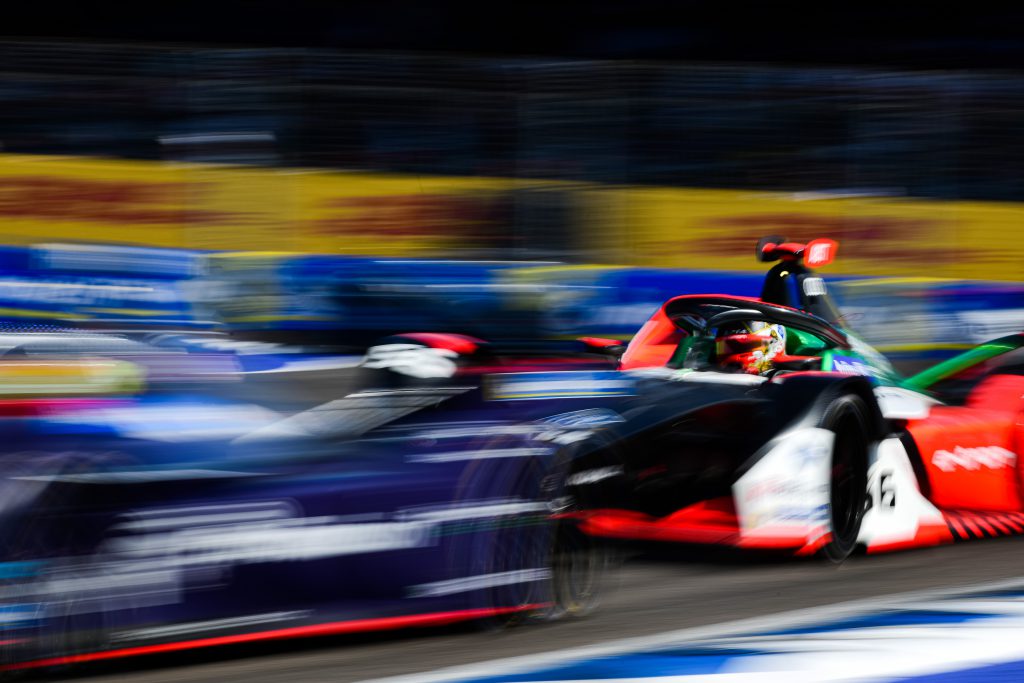The third rules set for the Formula E Championship – Gen3 – is set to become a key focus as the series looks at further future proofing itself for a post-COVID 19 world.
Discussions between manufacturers, the FIA and promoter Formula E Operations have already taken place on the subject of the championship’s plans for the Gen3 car, which is intended for its debut in the 2022/23 season.
Some manufacturers are believed to be concerned that plans for the Gen3 cars are too ambitious and that development costs will be excessive.
Doubts exist about the practicality of keeping to the ‘cost cap’ for mandatory customer supply and still making a profit, as manufacturers may have to recover the R&D costs in the unit car price.
The official deadline for the submission of tenders to supply chassis, battery, charging infrastructure and tyres for Gen3 is next Tuesday, April 14. The Race revealed last month that this date was extended by two weeks because of the coronavirus crisis.
The critical aspect of the Gen3 timeline is believed to be the deadline for manufacturers to commit, which The Race understands is slated for this December in readiness for the ninth Formula E season in 2022/23.
This is likely to prove troublesome for some manufacturers as they regroup after the present crisis and potentially review their long-term motorsport programme commitments.
So far the parameters of the Gen3 car have been made deliberately flexible, with two power options outlined among the tender requirements.
A key figure at a current Formula E team, who requested not to be named, told The Race on Thursday that the Gen3 car specification will be “incredibly challenging given the 780kg weight target set out in the tenders”.
The Race’s technical consultant Peter McCool, who was the technical director of the Amlin Aguri team in Formula E’s inaugural season of 2014-15, agrees with those concerns.
“Saving weight is usually achieved by attention to detail, the use of more complex materials and more complex design solutions – all of which cost significantly more the simple solution,” said McCool.
“The inclusion of a front energy recovery system is not straightforward. It will be a significant amount of additional mass.
“It would appear that the FIA expects the front powertrain kit to include MGU, MCU, transmission and driveshafts to be fitted inside the monocoque and mounted inboard, but using hub mounted generators is not precluded.”

Although he declined to speak about specifics regarding discussions on the Gen3 plans, Audi team principal Allan McNish told The Race that “everything is being discussed but ultimately it [Gen3] comes down to the FIA.
“We have to be mindful of what is happening right now because the likelihood is the world and the sporting landscape will be quite a different place in the coming years.
“Therefore this will have a knock for where we might want to go technically, it just has to be considered carefully right now.”
Thursday’s cost-cutting measures, including the deferral of the Gen2 EVO bodykits and a carryover of homologated powertrains, were officially ratified by the FIA World Motorsport Council.
McNish added that the decisive measures signed off by the FIA on Thursday had to be made with a degree of flexibility because different manufacturers had varying possibilities for completing their powertrains for future seasons.
“Flexibility was very important in getting these measures completed, no question,” he said.
“One size does not fit all here and it can’t because of so many different situations because it comes down to where you are based and things like local and company regulations for timelines with supply chains, etc.
“For everyone to be part of the future then there had to be a flexible scenario and everyone was quite clear on that.
“There were differing opinions on the detail of it but on the central points we were quite clear that costs need to be deferred now and future costs might need to be cut too.”







